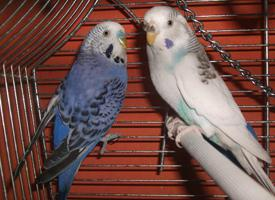
State of endangerment
| Non Endangered |
Animal description
The Scarlet Macaw (Ara macao) is a breathtakingly vibrant and colorful bird, belonging to the parrot family, that captivates the eye with its brilliant hues and majestic presence. Native to the humid evergreen forests of Central and South America, this species is among the largest of the Macaw family, reaching lengths of up to 85 centimeters from the beak to the tip of the tail feathers, and weighing approximately 1 to 1.5 kilograms. The Scarlet Macaw is an emblem of the tropical wilderness, symbolizing beauty, freedom, and the richness of biodiversity.The plumage of the Scarlet Macaw is predominantly a vivid red, but it is adorned with blue wings and tail, yellow coverts, and greenish-blue tips, creating a striking contrast that is hard to miss. The bird's strong and curved beak, an impressive tool for cracking nuts and seeds, is black, while the area of bare white skin around the eyes and partially extending to the face, is dotted with small feather lines. Their dark eyes sparkle with intelligence and curiosity, reflecting the complexity and sociability of their personalities.
Scarlet Macaws are known for their intelligence and vibrant personalities. They are highly social creatures, often seen in pairs or small family groups, and maintain monogamous relationships, showing strong bonds between mates. Their vocalizations are loud and varied, including squawks and screams that echo through the forests, serving as communication within the flock, and marking territory. These birds are also capable of mimicking human speech, a trait that, combined with their striking appearance, has made them popular in the pet trade, albeit raising concerns about their conservation.
In their natural habitat, Scarlet Macaws play a crucial role in the ecosystem. They are seed dispersers, feeding on a variety of fruits, nuts, and seeds. Their preference for certain hard-shelled nuts, which only a few species can crack with their powerful beaks, makes them pivotal in controlling the population of these plants and aiding in forest regeneration.
Despite their beauty and ecological importance, Scarlet Macaws face significant threats from habitat destruction and the illegal pet trade. Deforestation and land conversion for agriculture and livestock have led to the fragmentation of their natural habitat, limiting their space for living and breeding. The allure of their colorful plumage and the high demand for them as pets have led to overharvesting from the wild, further endangering their populations.
Conservation efforts for the Scarlet Macaw include habitat preservation, anti-poaching patrols, and breeding programs aimed at reintroducing them into the wild. Several reserves and national parks across their range have been established, providing sanctuaries where these magnificent birds can thrive. Education and local community involvement are also critical in protecting the Scarlet Macaw, ensuring that this symbol of the tropical forests remains a vibrant part of our world's natural heritage for generations to come.
In summary, the Scarlet Macaw is a symbol of the tropical rainforest's beauty and complexity. Its striking appearance, intelligence, and social nature, combined with the ecological role it plays, make it a fascinating subject of admiration and study. However, the challenges it faces remind us of the importance of conservation and the need to act to preserve the natural world.
Map of occurrence

Similar Animals
New photos of animals
Top 10 animals
- Dolphin gull (Leucophaeus scoresbii)
- Diana monkey (Cercopithecus diana)
- Moustached guenon (Cercopithecus cephus)
- Galápagos tortoise (Geochelone nigra complex)
- Japanese macaque (Macaca fuscata)
- Stone loach (Barbatula barbatula)
- Greek tortoise (Testudo graeca)
- Russian tortoise (Testudo horsfieldii)
- Common flying dragon (Draco volans)
- Galápagos penguin (Spheniscus mendiculus)


